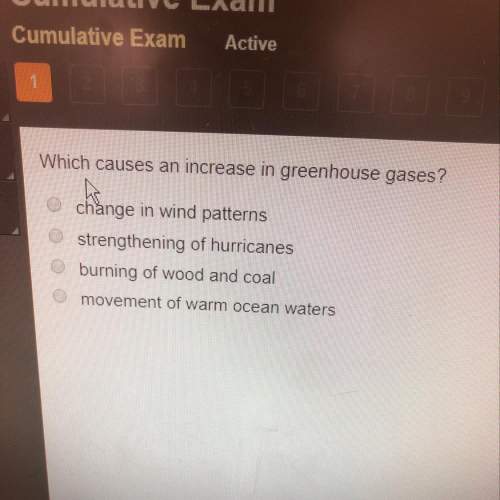
Answers: 1


Another question on Biology

Biology, 21.06.2019 20:00
Over the past 60 years, many amphibian species have experienced significant population declines and some species have become extinct. scientists suspected that local human activities such as the destruction of wetlands, regional pollution, and deforestation were the main reasons for these losses. however, research over the past 20 years reveals significant amphibian population declines in protected areas of the world, such as nature preserves and parks. these global declines suggest widespread problems including increased ultraviolet radiation, acid rain, and disease. in switzerland, for example, 14 of the 20 native amphibian species are threatened with extinction. chytridiomycosis is a fungal disease first identified in 1998 as a cause of massive amphibian deaths. in some severely impacted populations, a few individuals have survived, perhaps because of some natural resistance. if these resistant individuals continue to survive and prosper, new resistant populations might emerge. this would be an example of the founder effect artificial selection genetic drift natural selection sexual selection
Answers: 3

Biology, 22.06.2019 03:00
To answer this question, researchers studied populations of the dusky salamander (desmognathus ochrophaeus) living on different mountain ranges in the southern appalachian mountains. the researchers tested the reproductive isolation of pairs of salamander populations by leaving one male and one female together and later checking the females for the presence of sperm. four mating combinations were tested for each pair of populations (a and b)—two within the same population (female a with male a and female b with male b) and two between populations (female a with male b and female b with male a). the proportion of successful matings for each mating combination was measured. for example, when all the matings of a particular combination were successful, the researchers gave it a value of 1; when none of the matings were successful, they gave it a value of 0. then the researchers calculated an index of reproductive isolation that ranged from 0 (no isolation) to 2 (full isolation). the reproductive isolation value for two populations is the sum of the proportion of successful matings of each type within populations (aa + bb) minus the sum of the proportion of successful matings of each type between populations (ab + ba). the table provides data for the geographic distances and reproductive isolation values for 27 pairs of dusky salamander populations.
Answers: 1

Biology, 22.06.2019 15:30
Which term specifically refers to an area of the body between a medial and lateral structure
Answers: 3

You know the right answer?
When does the nuclear membrane dissolve? When does it reform?...
Questions

Mathematics, 30.05.2020 19:01


Mathematics, 30.05.2020 19:01

















Chemistry, 30.05.2020 19:01




